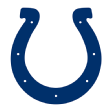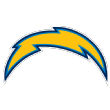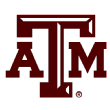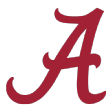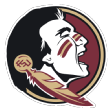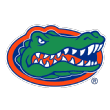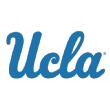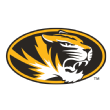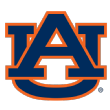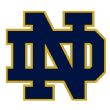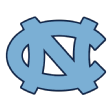How to fix the big flaws on each of the NBA's four worst teams
What big flaw should each of the NBA's four worst teams fix in 2017?
Even if the playoffs are already out of reach, the Lakers, Nets, Sixers and Suns still have moves to make.
Philadelphia 76ers (No. 30 in BPI)
Big flaw: The pairing of Joel Embiid and Jahlil Okafor
Until No. 1 overall pick
Ben Simmons returns, Philadelphia needs to find out which pieces already in the fold fit best alongside Joel Embiid, who has done more than merely show flashes of potential while still on a minutes restriction. Sporting a seemingly endless repertoire on the offensive end, he ranks in the top 10 in the NBA in points per 36 minutes while mixing in excellent footwork in the post and legitimate 3-point range.
Though head coach Brett Brown hasn't used Okafor and Embiid together often, things haven't gone well when Philly has tried the experiment.
With Embiid on court
Net Rating ORtg DRtg
With Okafor -21.5 95.8 117.3
Without Okafor 0.0 99.4 99.4
Overall -3.1 98.9 102.0
We're working with just an 80-minute sample, yet watching Sixers games tells you the same thing that the numbers do: Embiid and Okafor are simply an odd couple on the court together.
With both players on the floor, the 76ers have been outscored by 21.5 points per 100 possessions. In the 438 minutes that Embiid has played without Okafor, the Sixers have an even net rating, one that over the course of the season would place them between the Bulls and Grizzlies. Offensively there are obvious spacing issues and on defense the Sixers have been laughably bad, allowing 117 points per 100 possessions with both big men playing.
Embiid is already an elite rim protector. Not only would his 3.5 blocks per 36 minutes lead the NBA if he played enough minutes to qualify, but opposing players also are shooting just 42 percent against him at the rim, a figure that not only leads the 76ers but is among the best in the NBA. Meanwhile, Okafor is allowing 51 percent shooting at the rim (worse than
Pau Gasol). His presence makes it easier for teams to pull Embiid away from the inside and also results in Embiid guarding quicker 4s, something that while he's capable of doing in a pinch, probably isn't where he's best utilized.
Solution Trade Okafor
Poor results over 80 minutes aren't enough alone to justify trading a former No. 3 pick, but the Sixers should still try to move Okafor before the deadline.
Simmons ought to get some time at the 4 next to Embiid when he returns (and so should
Nerlens Noel and
Dario Saric). And though he may not be an ideal pairing next to Embiid, 7-footers with Okafor's offensive potential are valuable. That he's also on the front end of a team-friendly rookie contract makes him an attractive piece for any team that needs post scoring.
There's more reason to find a deal now than maintain a crowded,
partially disgruntled and messy frontcourt. If the 76ers can flip Okafor for a perimeter piece, they should do it.
Brooklyn Nets (29)
Big flaw: Lack of picks and young talent
In addition to their treasure trove of picks now controlled by the Celtics, the Nets don't have any young pieces of much value beyond
Rondae Hollis-Jefferson.
Chris McCullough, the team's 2015 first-rounder, appears to be a miss as he's averaged fewer than 6.0 MPG in 10 games this season. The only other player younger than 25 in their top 10 in minutes is former second-round pick
Isaiah Whitehead.
Due to the pick swap with Boston, BPI projects the Nets to pick 23rd in the first round of what is expected to be a
loaded draft at the top, and their 2018 first-rounder is headed straight to Boston.
Solution: Trade Brook Lopez
Lopez is having arguably the best season of his career and is easily the top player on the Nets' roster. Not only has he been one of the better offensive centers for several seasons, he has added a 3-point shot to his arsenal, too. Throw in the fact that he has missed just three games this season and it's likely the oft-injured center's stock will never be higher.
Lopez's contract -- $21 million this season and $22.6M in 2017-18, the final year of his deal -- makes a move tricky, but he's good enough and young enough at 28 that the Nets may be able to find a solid trade partner. And if not now, when? Keeping him until the summer of 2018 could mean losing him for nothing in free agency or dropping a fat max contract on a 30-plus big man when the franchise will likely still be far away from contention.
Luckily for Brooklyn their needs aren't limited in a trade. Get a young player with upside, another first-rounder in this draft and/or some future picks and it'll most likely be a net-positive.
Phoenix Suns (28)
Big flaw: Lineup musical chairs
The Suns have played five lottery picks age 23 or younger this season, a number matched only by the
Minnesota Timberwolves and 76ers. While they may lack an obvious future superstar, they offer no shortage of intriguing, high-ceiling prospects, including
Devin Booker,
TJ Warren,
Marquese Chriss,
Dragan Bender and
Alex Len. There is more raw clay in the Phoenix desert than any potter would know what to do with.
Throw in the presence of
Eric Bledsoe,
Brandon Knight,
P.J. Tucker,
Jared Dudley,
Leandro Barbosa and
Tyson Chandler -- all of whom have the game to command regular minutes -- and it becomes readily apparent that head coach Earl Watson almost has too many options.
The average NBA team has six different five-man lineups that have appeared in at least 10 games together. The Suns have one, tied with the Nets for the fewest in the NBA. The combination of Bledsoe, Booker, Tucker, Chriss and Chandler have appeared together in 16 of Phoenix's 31 games. The Suns have 32 different combinations of 3-man lineups that have played at least 150 minutes. None of them involve three of the 23-or-younger prospects.
If you consider Booker, Bender and Chriss the top three Suns prospects, at some point you'd want to see all three on the floor. So far this season, the three have shared the floor for a grand total of 15 minutes.
Solution: Unload some veterans
Tucker would likely be the easiest to move since he's in the final year of his contract and making just $5.3 million. He could provide a strong defensive presence on the wing for any contender.
Given the salary cap climate and going rate for productive rotation pieces, both Chandler and Dudley are also on relatively friendly deals. Dudley is on the hook for two more seasons after this at a combined cost of $19.5 million. Chandler comes at a steeper price as he's owed $13 million next season and $13.6 million the season after that. Though no longer the shot blocker he once was, Chandler is still an elite rebounder (his rebound rate of 23 percent ranks fifth in the NBA behind only
Andre Drummond,
Dwight Howard,
DeAndre Jordan and
Hassan Whiteside).
The Suns don't need to dump all of their vets, and it's not like they're short on young talent. They just don't need so much lineup clutter. Even if Tucker turned into an eventual draft-and-stash pick, it would be a useful step in not only creating space in the rotation short-term but also providing potential long-term stability.
Los Angeles Lakers (27)
Big flaw: The young and struggling defense
Playing NBA-caliber defense is hard, especially for young players. Put one or two gifted young athletes in a strong defensive unit and it's certainly possible for them to thrive, but when the system is almost entirely made up of them there are going to be speed bumps. Luke Walton's Lakers are no exception as they rank 29th in the NBA in defensive efficiency, allowing 109.8 points per 100 possessions.
They've particularly struggled when at least three pieces of their young core share the floor. Of the 10 three-man combinations featuring three of
Jordan Clarkson,
D'Angelo Russell,
Julius Randle,
Brandon Ingram and
Larry Nance Jr., the only two with a better defensive rating than the team's 109.8 are Ingram-Nance-Clarkson and Ingram-Nance-Randle. In the 84 minutes that the cornerstone trio of Russell, Ingram and Randle have shared the floor, they've allowed more than 116 points per 100 possessions.
Solution: Just keep playing the kids
The only way to get better is to play. Since the Lakers have made it clear it's all about the future, the best move here is no big move.
Though no Laker is averaging more than 30 MPG, Walton is playing the young guns at critical moments. Randle, Clarkson, Ingram and Russell rank among the top five this season for the Lakers in clutch time played (final five minutes and the score within five points) along with super sub Lou Williams. While that has certainly played a part in the Lakers having the NBA's fourth-worst defense in those situations, it's part of a necessary learning curve.
Each of the young Lakers are making individual strides on the defensive end of the floor, according to ESPN's
real plus-minus (RPM). A year after ranking outside the top 60 among point guards in defensive RPM, Russell is now inside the top 40. Randle has improved his DRPM from negative-1.55 to plus-0.27 and Nance now ranks among the top 20 power forwards, 10 spots ahead of noted defensive presence
Serge Ibaka, among others.
Even Clarkson, whose DRPM of minus-2.14 rates below the likes of
Kyrie Irving and
Austin Rivers, has improved by that metric for the third straight season. Though Ingram ranks 79th out of 80 qualified small forwards, that was to be expected this early. The best thing the Lakers can do for all five is just keeping giving them opportunities -- and, hey, maybe it'll help them
keep their pick.


